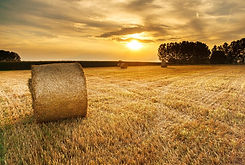.jpg)
Serving the community since 1894.




Hale is a democratic unit with an active Parish Council that has ten elected members who assemble for ten Full Council meetings each year.
The Council works in the community with various groups, giving a voice to residents and ensuring the Parish continues to flourish by supporting activities such as Hale Carnival and the Christmas Festival. By responding to and commenting on planning applications, concerns of residents, and crime prevention measures, the Parish Council aims at all times to improve the quality of life for the residents of the village.
Mentioned in the Domesday Book, Hale is one of Halton’s oldest settlements and a historic market town with a population of approximately fifteen hundred electors. The Parish lies in the County of Cheshire, located to the south west of Hale Bank, separated by a rural buffer zone with approximately two miles of open countryside.
Once a holiday destination of Winston Churchill and since described by the Queen as ‘a rural oasis’, Hale is a small village in a bucolic setting enveloped by ancient woodlands, Sites of Special Scientific Interest, a UNESCO Ramsar Convention site, scheduled historic monuments, listed buildings, conservation areas, and Green Belt - intersected by the Trans Pennine trail and bordered to the south by the popular Mersey Way coastal walk; offering valued views across the River Mersey and surrounding Grade 1 agricultural land.
Hale has a number of well used community facilities including a village hall, primary school, youth centre, sports field, playground, church, country walks and park.
With a vibrant tourism economy, Hale remains much as it was in the mid-twentieth century; lined with thatched whitewashed cottages and listed sandstone buildings.
Known for its famous "Childe of Hale", the gentle giant John Middleton grew to 9 foot 3 inches, wrestled for King James I and lived in the village from 1578 until 1623. Legend has it that the young boy fell asleep by Hale shore one day inside a huge figure that he had traced in the sand, only to wake up having grown to the full size of his outline.
Much credit is owed to the Blackburne family of Hale for their part in the early discovery and mining of rock salt below Hale Cliff, on the banks of Dungeon marsh. A site recognised by merchants as the catalyst that contributed to the early rise of the nearby Liverpool docklands. The Blackburne and subsequent Ireland-Blackburne and Hesketh families provided many of the foundations that have helped Hale to flourish, not least in establishing the buoyant agricultural economy that has ensured the village could continue to thrive as a rural community ever since.
(Photographs by Vincent Phillips)
Hale Parish Council,
Hale Village Hall,
High Street,
Hale,
Halton,
Cheshire,
L24 4AE